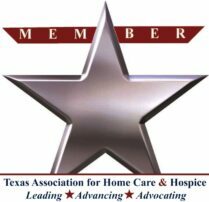We offer skilled nursing patient teachings applicable for geriatric population on respiratory system regarding following health topics:
Acute Bronchitis
- Pathophysiology of Acute Bronchitis
- Symptoms of Acute Bronchitis Episode
- Relief Measures During an Active Episode of Bronchitis
Acute Respiratory Distress Syndrome
- Pulmonary Surfactant
- Acute Respiratory Distress Syndrome (ARDS)
- Pathogenesis of Acute Respiratory Distress Syndrome
- Risk Factors for Development of Acute Respiratory Distress Syndrome
- Signs and Symptoms of Acute Respiratory Distress Syndrome
- Management of Acute Respiratory Distress Syndrome
Anatomy & Physiology of Respiratory Tract
- Anatomy of Respiratory Tract
- Functional Zones of Respiratory Tract
- Functions of Conduction Zone of the Respiratory Tract
- Functions of Respiratory Zone of the Respiratory Tract
Asthma
- Pathophysiology of Asthma
- Usual Triggers for Asthma
- Extrinsic Asthma
- Intrinsic Asthma
- Signs and Symptoms of Asthma
- Measures to Avoid Allergens Causing Asthma
- Chemical Mediators of Asthma
- Exacerbation Prevention Measures for Asthma Patients
Atelectasis
- Atelectasis
- Risk Factors for Atelectasis
Common Cold & Flu
- Allergic Rhinitis
- Symptoms of Allergic Rhinitis
- Flu Prevention Measures
- Signs and Symptoms of Flu
COPD
- Management measures for Chronic Bronchitis
- Pathophysiology of Chronic Bronchitis
- Signs and Symptoms of Chronic Bronchitis
- Advantages of Pursed Lip Breathing
- Pursed Lip Breathing Technique
Diskus Usage
- Process to Use Diskus Inhaler
- Precautions for Using a Diskus
Emphysema
- Pathophysiology of Emphysema
- Signs and Symptoms of Emphysema
- Management Measures to Prevent Exacerbation of Emphysema
Hypoxia
- Hypoxia
- Risk Factors for Hypoxia
- Signs and Symptoms of Generalized Hypoxia
- Management and Prevention of Episodes of Hypoxia
Incentive Spirometer
- Advantages of Using Incentive Spirometer
- Process to Use an Incentive Spirometer
Inhaler Usage
- Metered Dose Inhaler
- Process to Use Metered Dose Inhaler
- Priming an Inhaler
- Cleaning a Metered Dose Inhaler
- Counting Puffs for Inhalers with Built-In Counter
- Counting Puffs for Inhalers with No Built-In Counter
Mechanism of Respiration
- Phases and Mechanism of Respiration
- Diaphragm and Control of Respiration
- Mechanism of Inspiration
Nebulizer Usage
- Nebulizer and Its Uses
- How to Use a Nebulizer
- Nebulizer Maintenance
- Disinfection of Nebulizer
Oxygen Usage
- Oxygen Precautions
- Storage and Transport of Oxygen Tanks
- Caution to be Exercised with Oxygen Concentrator
- Caution to be Exercised with Liquid Oxygen
- Advantages of Supplemental Oxygen
- Types of Oxygen Supplementation
Pneumonia
- Pneumonia
- Bacterial Pneumonia
- Signs and Symptoms of Bacterial Pneumonia
Pulmonary Embolism
- Pulmonary Embolism
- Measures to Prevent Development of Pulmonary Embolism
- Risk Factors for Pulmonary Embolism
- Signs and Symptoms of Pulmonary Embolism
Spacer Usage
- Spacers
- How to Use a Spacer
- Precautions for Using a Spacer
- Advantages of Using a Spacer
- Process to Clean a Spacer

